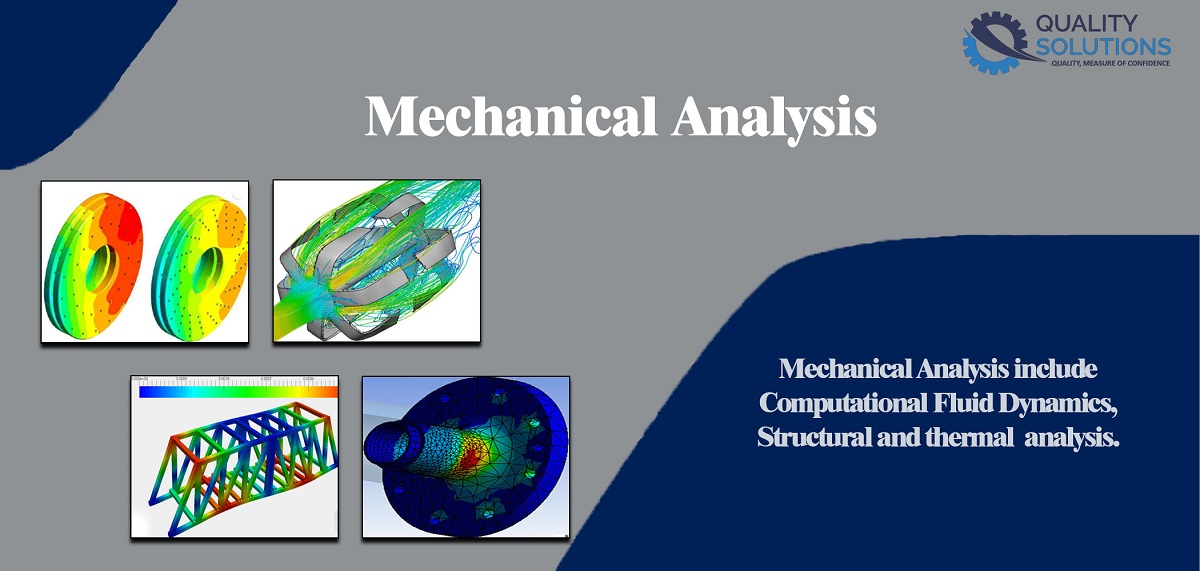Computational Fluid Dynamics
External flow simulation around a product is important to understand its aerodynamic characteristics and the pressure distribution induced by the fluid on it. Costly wind tunnel experiments can be reproduced very simply using Computational Fluid Dynamics to be sure about the performance of your product.
Computational Fluid Dynamics provides all types of results required to assess the behavior of a fluid outside a product: Velocity, pressure, pressure gradient, density, viscosity, kinetic energy, wall shear stress, vorticity for turbulence.
Applications:
- Flow Analysis
- Aerospace
- Automobile
- HVAC Analysis
- Smoke Analysis
- Mechanical Boiler
- Heat Transfer Analysis
Static Analysis
A static analysis calculates the effects of steady loading conditions on a structure, while ignoring inertia and damping effects, such as those caused by time-varying loads.
A static analysis can, however, include steady inertia loads (such as gravity and rotational velocity), and time-varying loads that can be approximated as static equivalent loads (such as the static equivalent wind and seismic loads commonly defined in many building codes).
Applications:
- Material Strength Analysis
- FEA Fatigue Analysis
- Aerospace & Automotive Parts
- Mechanical Parts
- Design Verification & optimization
Static Analysis
A Stress, linear, and non-linear static, frequency, linear buckling, thermal, and combined thermal-structural simulation on parts and assemblies. Non-linear capabilities include material yielding, large deformations, large displacements, and contact.
Applications:
- Structural Analysis
- Structural Assembly modelling
- Structural Optimization
- High Performance Computing

